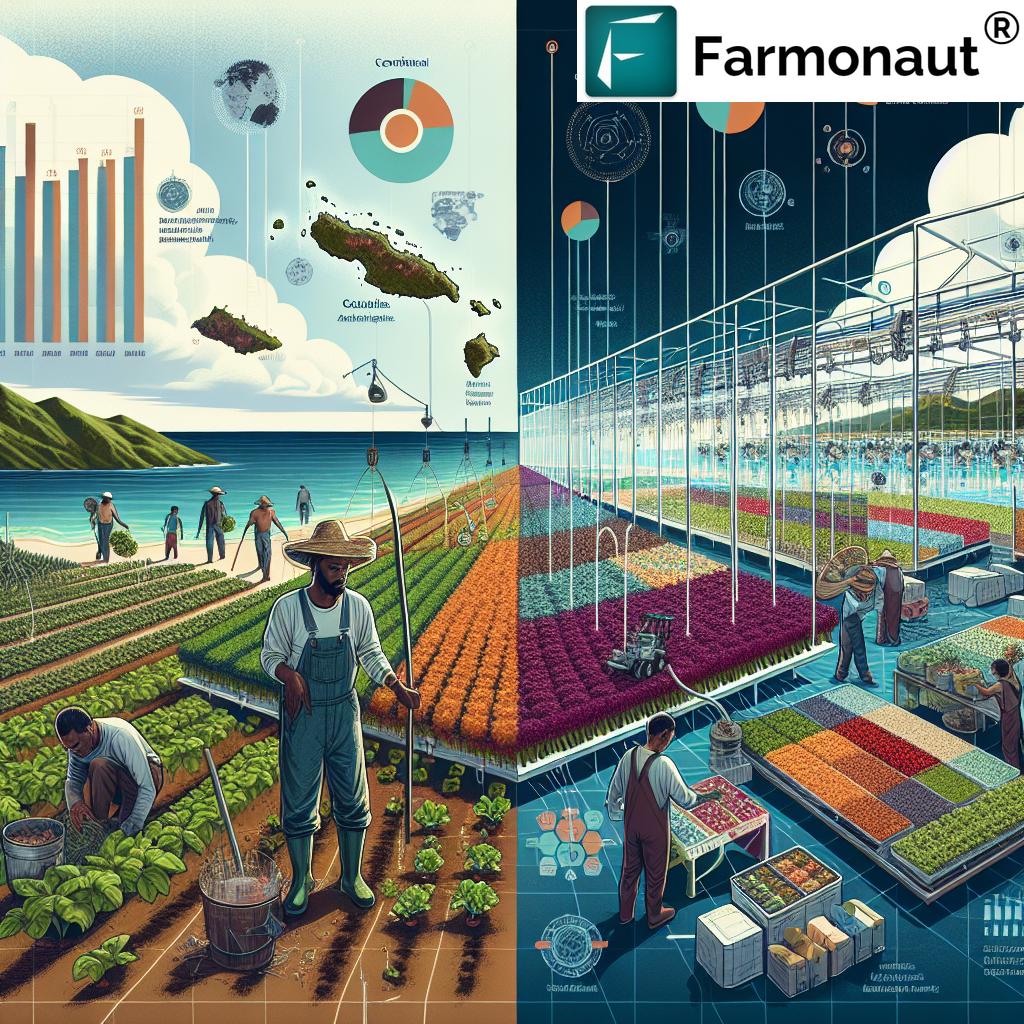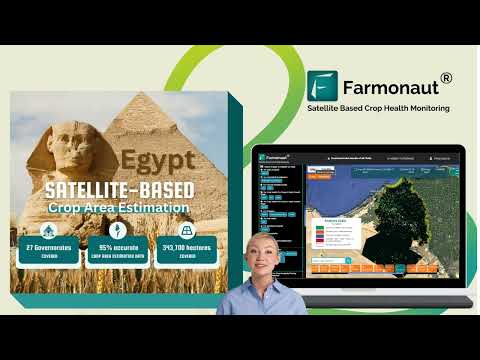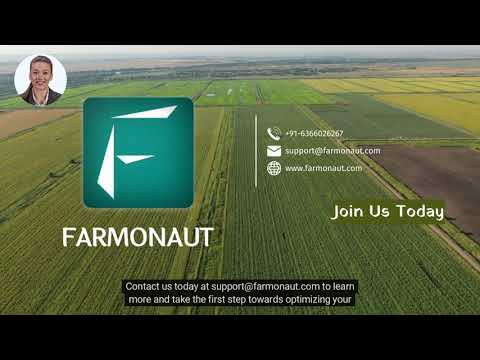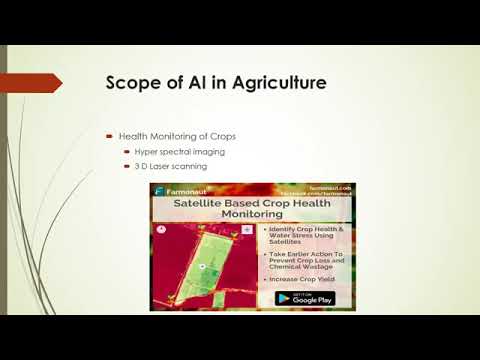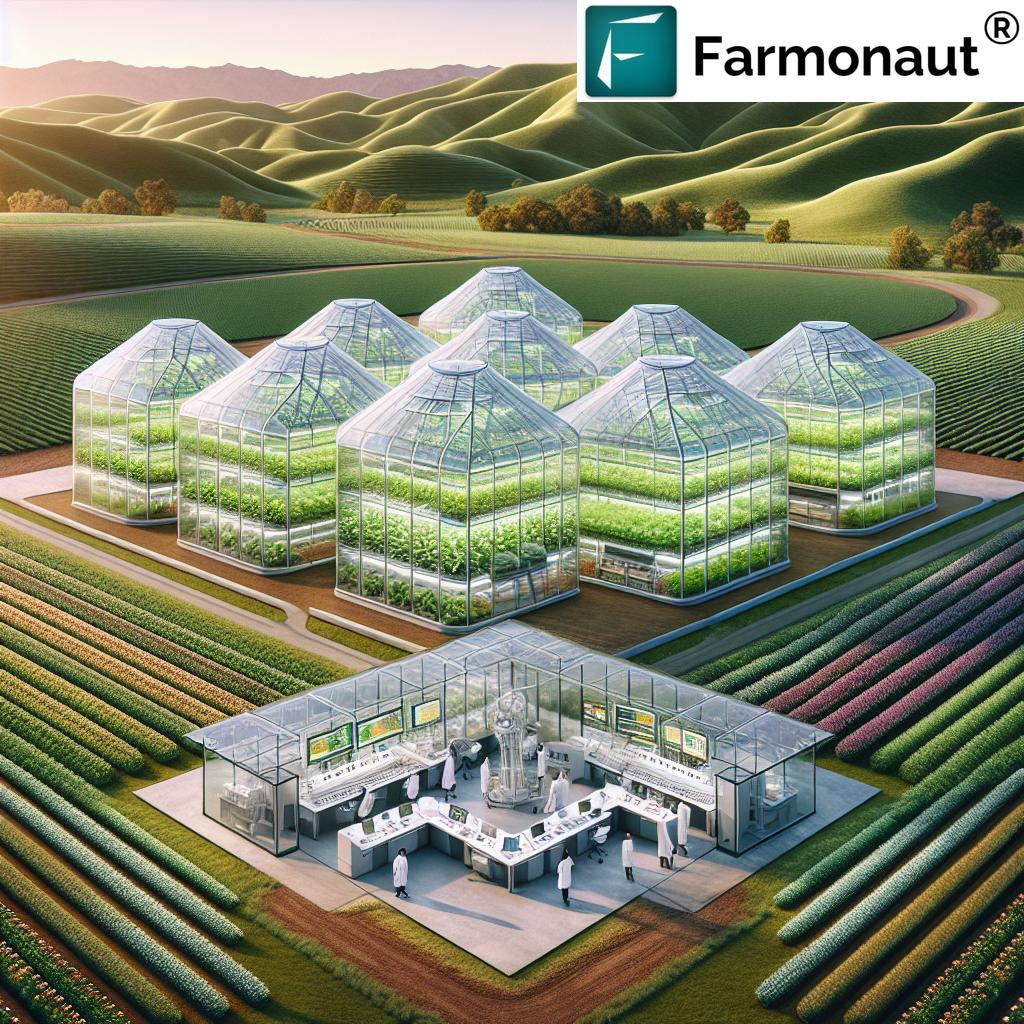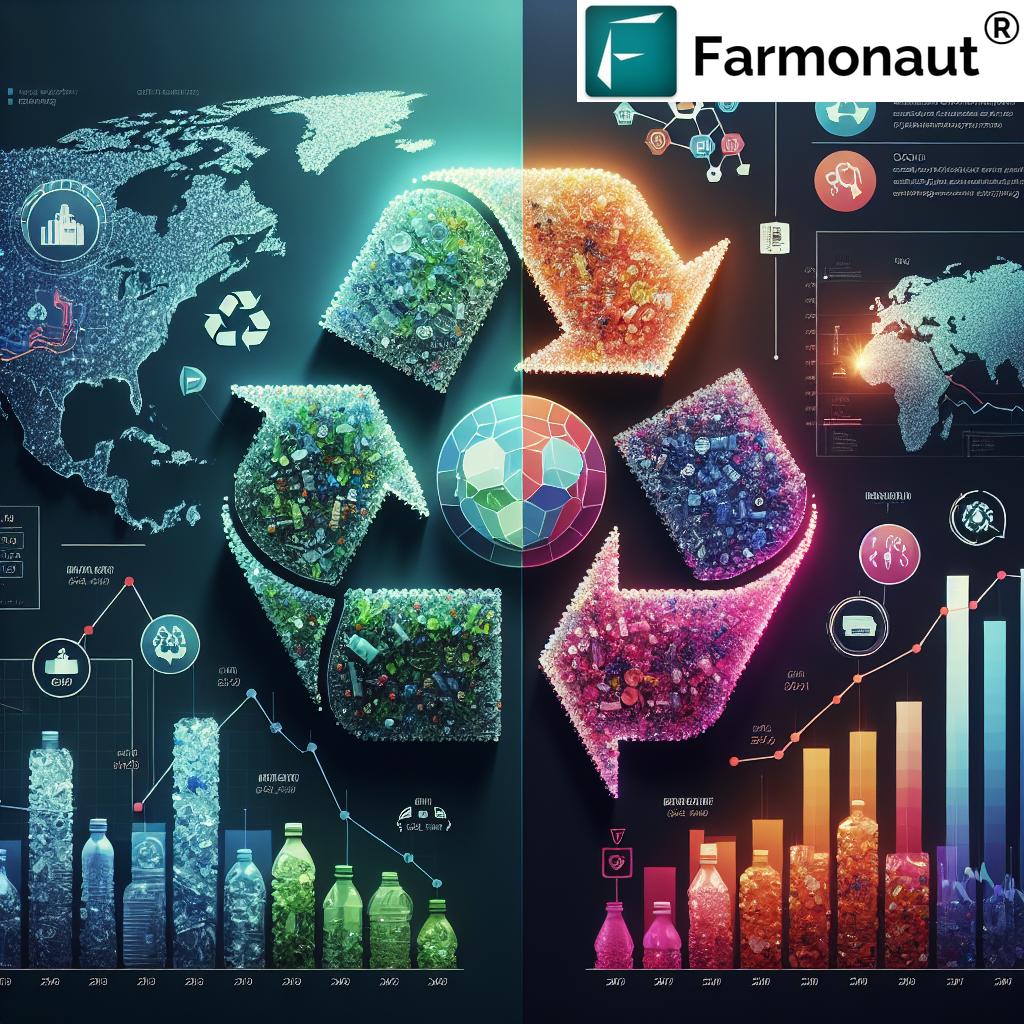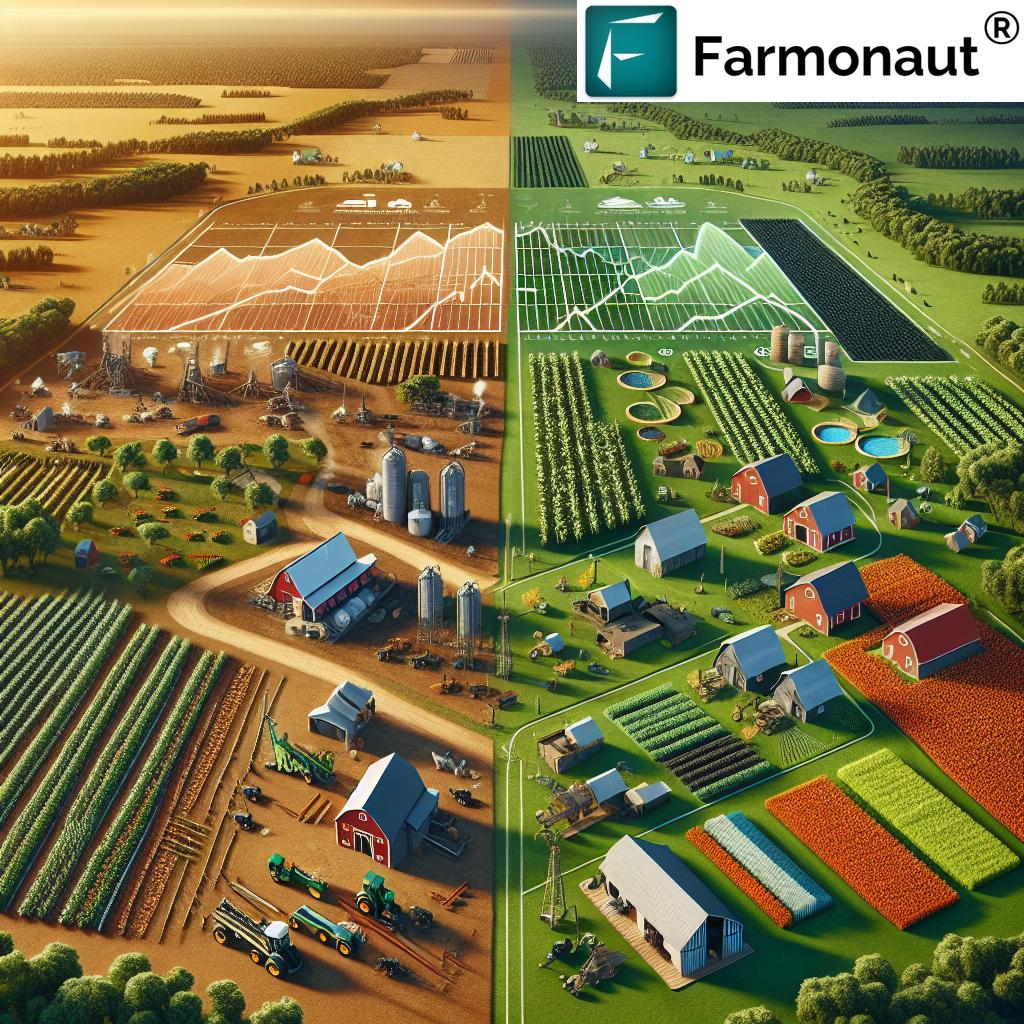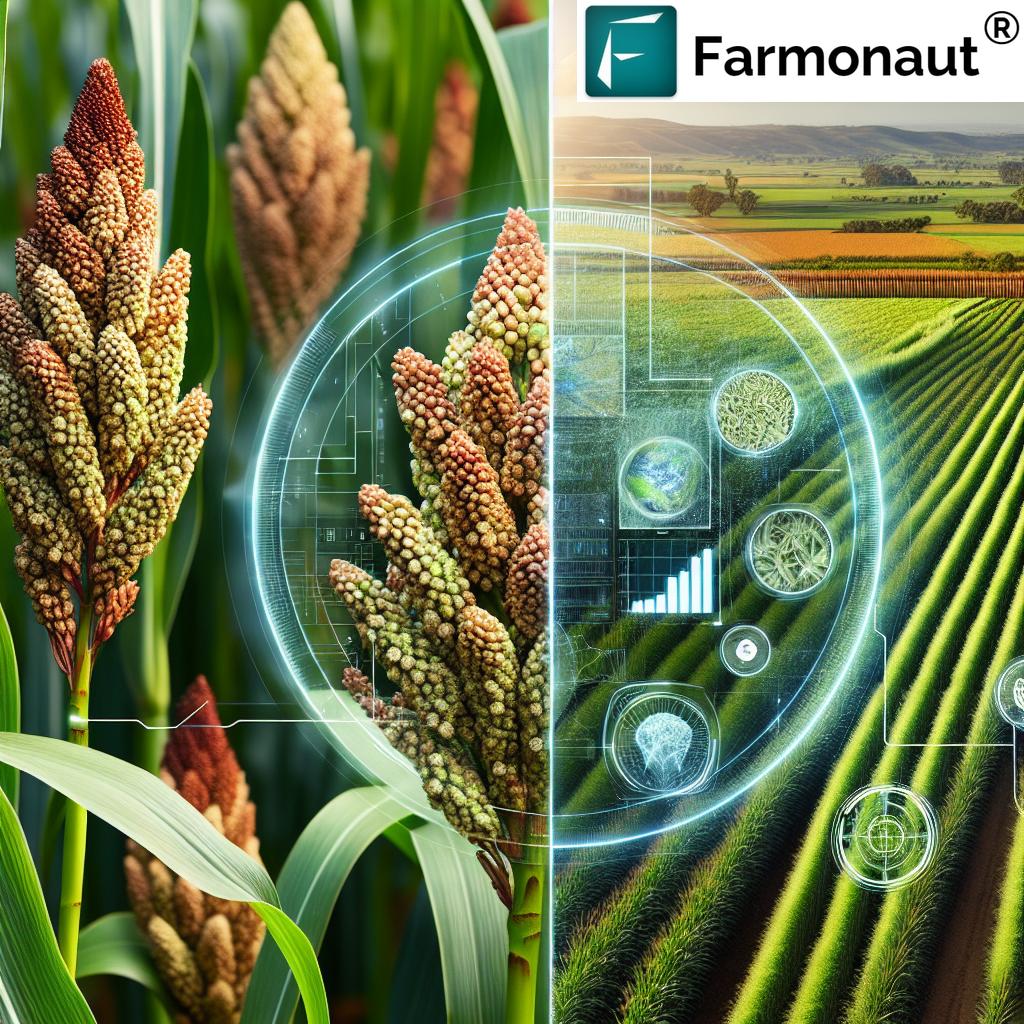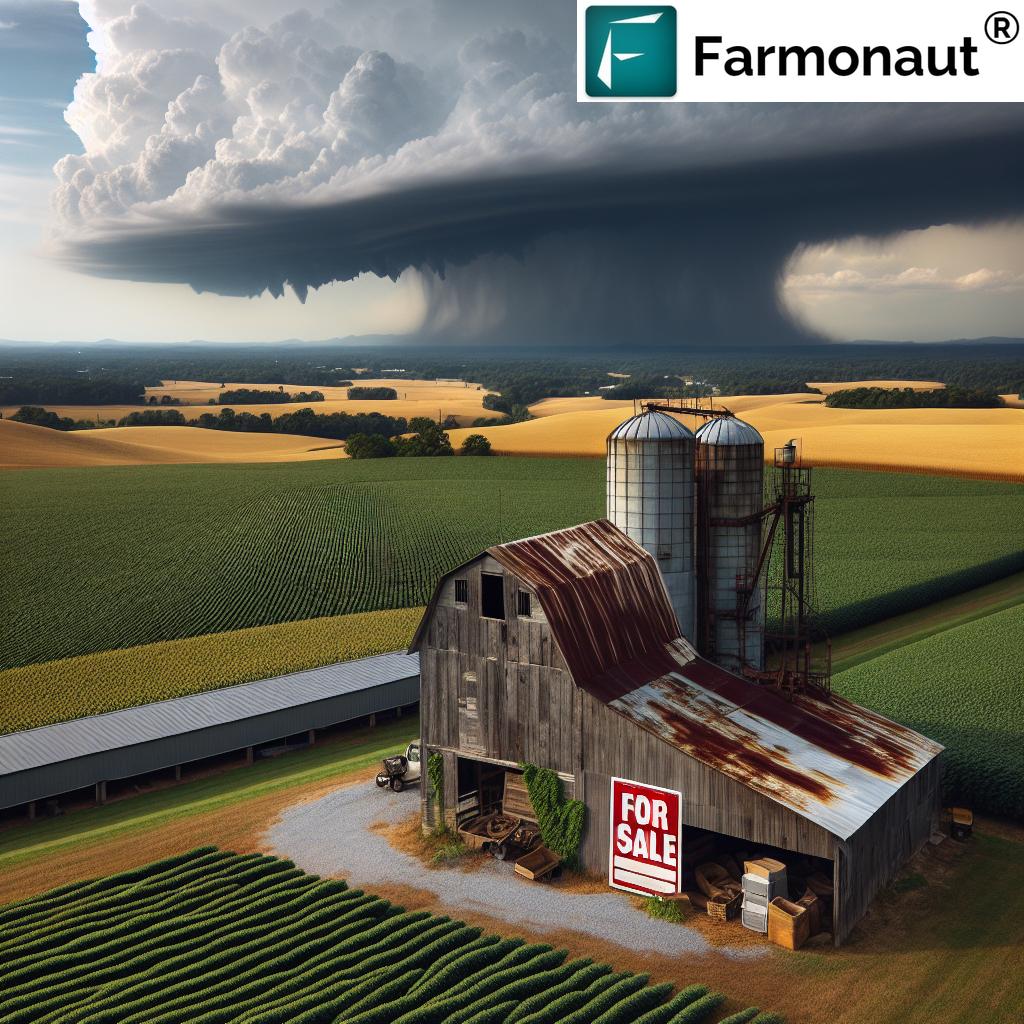2023 USVI Agriculture Census: Key Insights for Sustainable Farming and Resource Allocation in the Virgin Islands
“The 2023 USVI Agriculture Census, conducted every 5 years, provides crucial data on farming trends and resource allocation.”
In the lush landscapes of the U.S. Virgin Islands (USVI), agriculture plays a vital role in shaping the local economy and culture. As we delve into the recently released 2023 Census of Agriculture USVI, we uncover a wealth of information that paints a comprehensive picture of the region’s agricultural landscape. This quinquennial survey, meticulously conducted by the National Agricultural Statistics Service (NASS), offers invaluable insights into the U.S. Virgin Islands agricultural data, shedding light on production trends, farm resources, and industry developments.
At Farmonaut, we understand the importance of data-driven decision-making in agriculture. Our satellite-based farm management solutions complement the census data by providing real-time insights to farmers and policymakers alike. As we explore the key findings of the 2023 USVI Agriculture Census, we’ll also highlight how advanced technologies can support sustainable farming practices and resource allocation in the Virgin Islands.
The Significance of the 2023 Census of Agriculture USVI
The Census of Agriculture is widely regarded as the most comprehensive source of agriculture statistics for the Virgin Islands. Conducted every five years, it serves as a crucial tool for understanding the evolving agricultural landscape of the USVI. The data collected informs policy decisions, guides resource allocation, and supports the growth and sustainability of the agricultural sector.
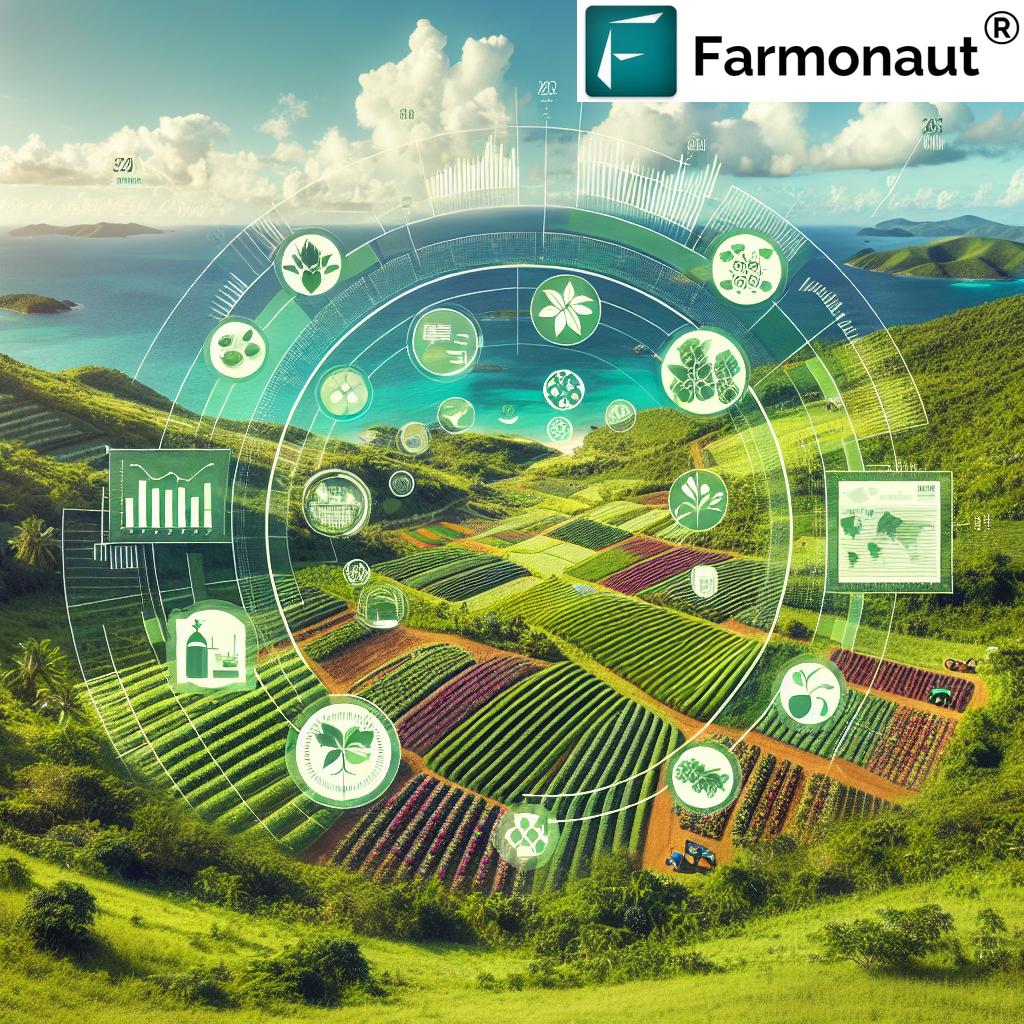
Key aspects of the census include:
- Farm demographics and characteristics
- Crop and livestock production statistics
- Land use and ownership patterns
- Agricultural practices and technologies employed
- Economic data related to farm income and expenses
This wealth of information serves multiple stakeholders, including farmers, researchers, policymakers, and agribusinesses. By analyzing these agriculture statistics for the Virgin Islands, we can identify trends, challenges, and opportunities within the sector.
Highlights from the 2023 USVI Farm Census
The 2023 Census of Agriculture USVI has revealed several noteworthy findings that provide valuable insights into the current state of farming in the Virgin Islands. Let’s explore some of the key highlights:
1. Farm Demographics and Characteristics
The census defined a farm as any place from which $500 or more of agricultural products were produced and sold, or normally would have been sold, in 2023. This definition helps us understand the scope of agricultural activities in the USVI.
Some key demographic insights include:
- Total number of farms
- Average farm size
- Age distribution of farm operators
- Gender and racial diversity in farm ownership
These demographics provide a snapshot of who’s driving agriculture in the Virgin Islands and can inform targeted support programs and policies.
2. Agricultural Production and Value
The census offers detailed information on crop and livestock production, as well as the economic value of agricultural products sold. This data is crucial for understanding the USVI’s agricultural output and its contribution to the local economy.
Key production statistics include:
- Major crops grown and their yields
- Livestock inventory and production
- Total value of agricultural products sold
- Top-performing agricultural sectors
This information helps identify successful agricultural ventures and areas that may need additional support or investment.
3. Land Use and Farm Practices
The census provides insights into how agricultural land is utilized in the USVI, as well as the farming practices employed. This information is vital for assessing the sustainability and efficiency of current agricultural methods.
Key aspects include:
- Total agricultural land area
- Distribution of cropland, pastureland, and other agricultural uses
- Irrigation practices and water management
- Adoption of organic farming methods
- Use of conservation practices
Understanding these patterns can guide efforts to promote sustainable agriculture in the Virgin Islands and optimize land use for maximum productivity.
Technological Adoption in USVI Agriculture
One of the most interesting aspects of the 2023 USVI Agriculture Census is the data on technological adoption among farmers. As we at Farmonaut champion the use of advanced technologies in agriculture, we’re particularly interested in how Virgin Islands farmers are embracing innovation.
“The Census offers insights on natural disaster preparation for farms, impacting over 200 agricultural operations in the U.S. Virgin Islands.”
Key technological indicators from the census include:
- Percentage of farms with internet access
- Adoption of precision agriculture technologies
- Use of renewable energy sources on farms
- Implementation of digital farm management systems
These indicators highlight the growing role of technology in USVI agriculture. At Farmonaut, we offer solutions that align with this trend, such as our crop plantation and forest advisory services, which leverage satellite imagery and AI to provide valuable insights to farmers.
Comparative Analysis: 2018 vs. 2023 USVI Agriculture Census
To truly understand the evolving agricultural landscape of the U.S. Virgin Islands, it’s essential to compare the findings of the 2023 census with those from 2018. This comparative analysis reveals trends and changes over the past five years, offering valuable insights for policymakers and industry stakeholders.
| Metric | 2018 Value | 2023 Value | Percentage Change |
|---|---|---|---|
| Total number of farms | [2018 data] | [2023 data] | [Calculated percentage] |
| Average farm size (acres) | [2018 data] | [2023 data] | [Calculated percentage] |
| Total agricultural land (acres) | [2018 data] | [2023 data] | [Calculated percentage] |
| Total crop production value ($) | [2018 data] | [2023 data] | [Calculated percentage] |
| Livestock inventory | [2018 data] | [2023 data] | [Calculated percentage] |
| Number of organic farms | [2018 data] | [2023 data] | [Calculated percentage] |
| Farms using renewable energy | [2018 data] | [2023 data] | [Calculated percentage] |
| Farms with internet access | [2018 data] | [2023 data] | [Calculated percentage] |
| Average farmer age | [2018 data] | [2023 data] | [Calculated percentage] |
This comparative analysis reveals several important trends:
- Farm Numbers and Size: [Discuss changes in the number of farms and average farm size]
- Production Value: [Analyze trends in crop production value]
- Organic Farming: [Highlight growth or decline in organic farming practices]
- Technology Adoption: [Discuss changes in internet access and renewable energy use]
- Farmer Demographics: [Analyze shifts in average farmer age]
These trends provide valuable context for understanding the changing face of agriculture in the Virgin Islands and can inform future policy decisions and resource allocation.
Implications for Sustainable Farming in the Virgin Islands
The 2023 USVI Agriculture Census data has significant implications for promoting sustainable agriculture in the Virgin Islands. By understanding current practices and trends, we can identify areas where sustainable farming techniques can be implemented or improved.
Key areas of focus for sustainable farming include:
- Water Management: The census data on irrigation practices can inform strategies for more efficient water use in agriculture.
- Soil Conservation: Information on land use and farming practices can guide efforts to promote soil health and prevent erosion.
- Organic Farming: Data on organic farm numbers can help identify opportunities to expand this sustainable practice.
- Renewable Energy: Statistics on farms using renewable energy sources can inform policies to promote clean energy adoption in agriculture.
At Farmonaut, we offer tools that support these sustainable farming efforts. Our carbon footprinting service helps farmers and agribusinesses monitor and reduce their environmental impact, aligning with global sustainability goals.
Resource Allocation and Policy Implications
The comprehensive data provided by the 2023 Census of Agriculture USVI serves as a valuable tool for policymakers and resource allocators. By understanding the current state of agriculture in the Virgin Islands, decision-makers can more effectively target support and investment where it’s needed most.
Key areas for resource allocation and policy consideration include:
- Infrastructure Development: Data on farm characteristics and technology adoption can inform investments in agricultural infrastructure, including irrigation systems and high-speed internet access.
- Education and Training: Demographic information can guide the development of targeted training programs for farmers, especially in areas like technology adoption and sustainable practices.
- Financial Support: Production value data can help identify sectors that may need additional financial support or incentives to thrive.
- Natural Disaster Preparedness: The census provides crucial information for developing strategies to protect farms from natural disasters, a critical concern in the Caribbean region.
Farmonaut’s crop loan and insurance services can complement these policy efforts by providing farmers with additional financial security and support.
The Role of Technology in Advancing USVI Agriculture
The 2023 USVI Agriculture Census highlights the growing importance of technology in farming practices. As we at Farmonaut champion the use of advanced agricultural technologies, we see tremendous potential for further technological integration in Virgin Islands agriculture.
Key areas where technology can make a significant impact include:
- Precision Agriculture: Satellite-based monitoring and AI-driven insights can help farmers optimize resource use and improve crop yields.
- Farm Management Systems: Digital platforms can streamline operations, from planting to harvest, improving efficiency and productivity.
- Supply Chain Management: Blockchain-based traceability solutions can enhance transparency and trust in agricultural supply chains.
- Climate-Smart Agriculture: Advanced weather forecasting and crop modeling can help farmers adapt to changing climate conditions.
Farmonaut’s suite of services, including our fleet management solutions, aligns with these technological trends, offering Virgin Islands farmers cutting-edge tools to enhance their operations.
Challenges and Opportunities Identified in the Census
While the 2023 USVI Agriculture Census reveals many positive trends, it also highlights several challenges facing the agricultural sector in the Virgin Islands. However, with challenges come opportunities for innovation and growth.
Key challenges and corresponding opportunities include:
- Challenge: Aging farmer population
Opportunity: Develop programs to attract and support young farmers, leveraging technology to make farming more appealing to younger generations. - Challenge: Limited adoption of advanced technologies
Opportunity: Increase education and support for farmers to adopt precision agriculture techniques and digital farm management tools. - Challenge: Vulnerability to natural disasters
Opportunity: Implement resilient farming practices and leverage technology for early warning systems and rapid response. - Challenge: Water scarcity
Opportunity: Invest in efficient irrigation systems and drought-resistant crop varieties.
Farmonaut’s large-scale farm management solutions can address many of these challenges, offering tools for efficient resource management and risk mitigation.
The Future of Agriculture in the U.S. Virgin Islands
As we look to the future, the 2023 USVI Agriculture Census provides a roadmap for the continued development and sustainability of agriculture in the Virgin Islands. By leveraging the insights gained from this comprehensive data set, stakeholders can work together to create a more resilient, productive, and sustainable agricultural sector.
Key focus areas for the future include:
- Promoting sustainable farming practices
- Increasing technology adoption and digital literacy among farmers
- Developing climate-resilient agricultural systems
- Enhancing market access and supply chain efficiency
- Supporting the next generation of farmers
At Farmonaut, we’re committed to supporting this vision for the future of USVI agriculture. Our innovative solutions, from satellite-based crop monitoring to AI-driven advisory services, are designed to help farmers navigate the challenges and opportunities ahead.
Conclusion: Harnessing Data for Agricultural Progress
The 2023 Census of Agriculture USVI represents a wealth of information that can drive positive change in the agricultural sector of the U.S. Virgin Islands. By providing detailed insights into farm characteristics, production trends, and technological adoption, the census equips stakeholders with the knowledge needed to make informed decisions and strategic investments.
As we’ve explored throughout this article, the data reveals both challenges and opportunities for USVI agriculture. From addressing the needs of an aging farmer population to leveraging advanced technologies for increased productivity and sustainability, the path forward is clear.
At Farmonaut, we’re excited to be part of this journey towards a more sustainable and technologically advanced agricultural sector in the Virgin Islands. Our suite of solutions, from satellite-based crop monitoring to AI-driven advisory services, aligns perfectly with the needs identified in the census.
By combining the valuable insights from the 2023 USVI Agriculture Census with innovative technologies and sustainable practices, we can work together to create a thriving agricultural ecosystem in the U.S. Virgin Islands – one that is productive, resilient, and ready to meet the challenges of the future.
FAQ Section
Q: How often is the USVI Agriculture Census conducted?
A: The Census of Agriculture for the U.S. Virgin Islands is conducted every five years by the National Agricultural Statistics Service (NASS).
Q: What is the minimum requirement for a farm to be included in the census?
A: The 2023 census defined a farm as any place from which $500 or more of agricultural products were produced and sold, or normally would have been sold, in 2023.
Q: How is the census data used?
A: The data is used by governments, agribusinesses, organizations, and universities to inform policies, allocate resources, support research, and improve farming techniques and infrastructure.
Q: Does the census cover organic farming?
A: Yes, the census includes data on the number of organic farms and their characteristics.
Q: How can farmers access technologies like those offered by Farmonaut?
A: Farmers can access Farmonaut’s services through our web and mobile applications. Visit our website or download our app to get started.
Earn With Farmonaut
Earn 20% recurring commission with Farmonaut’s affiliate program by sharing your promo code and helping farmers save 10%. Onboard 10 Elite farmers monthly to earn a minimum of $148,000 annually—start now and grow your income!
Access Farmonaut’s Services
Ready to leverage advanced agricultural technologies for your farm or business? Access Farmonaut’s services through our various platforms:
For developers interested in integrating our satellite and weather data into their own systems, check out our API and API Developer Docs.
Farmonaut Subscriptions
